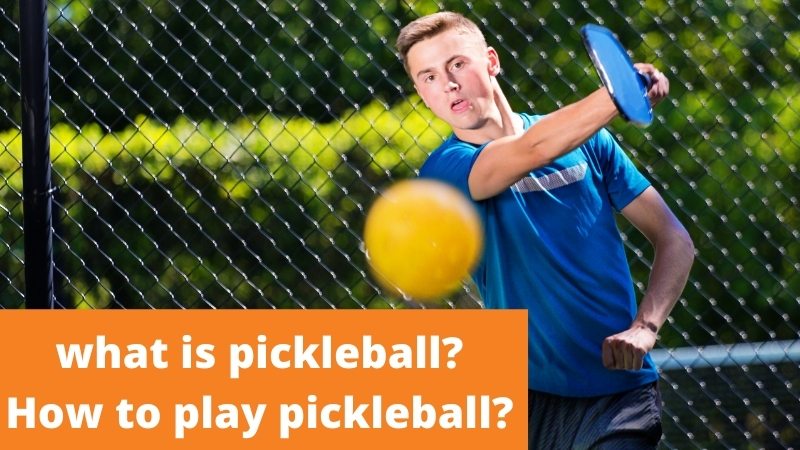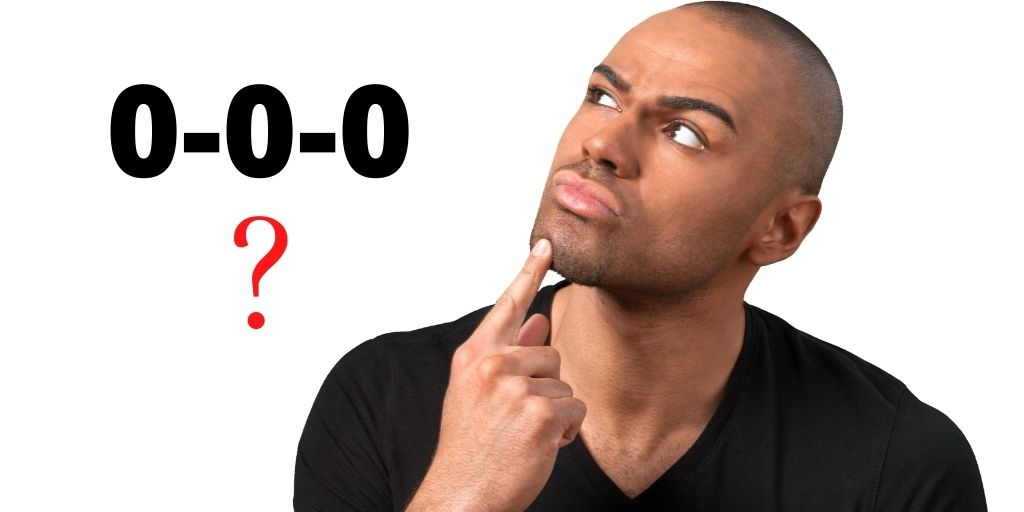Have you recently started playing pickleball? Surely, you have made a great decision. After all, it is so much fun and enjoyable to play pickleball regardless of your age. However, we are prone to make some common mistakes as a beginner.
Sometimes, you don’t know what mistakes you are making. In some cases, you may be well-aware of the mistakes but don’t have the idea to solve them. Correcting these common errors is crucial to uplift your pickleball skills and win the game.
In this write-up, we will shed some light on some common beginner pickleball players’ mistakes and the perfect way to avoid or get rid of them. Let’s begin!
Beginner Pickleball Player’s Mistakes
1. Too Powerfully Hitting Back A Hard Shot
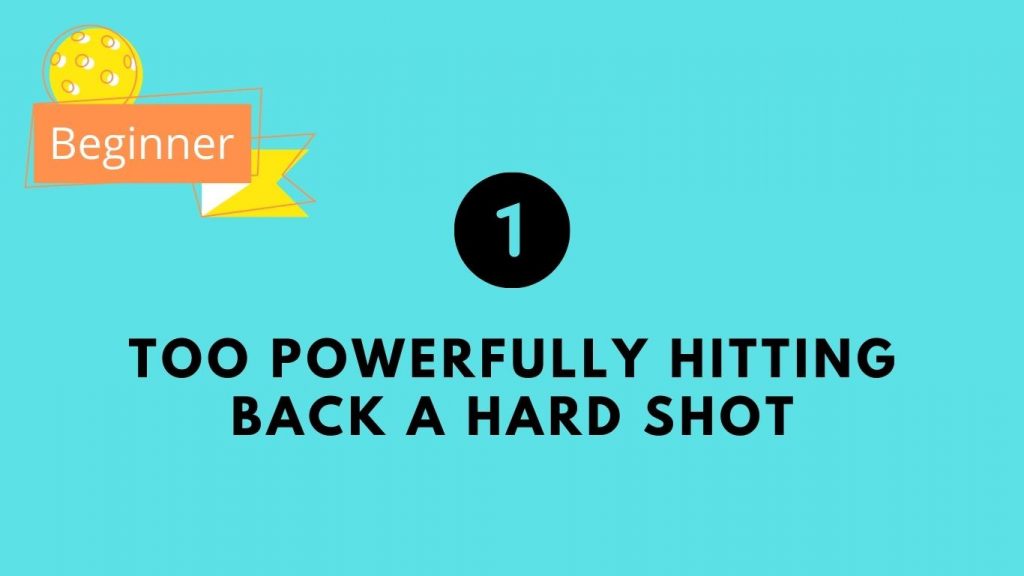
We all try to dominate over our rival players. Most beginners try to hit back power shots with more hard. Have you also done it? Then, it is time to correct yourself.
Leave the thought of sending back a power shock with vigorous power. Instead, you want to block the power shot technically without swinging.
Your main aim should be to prevent your opponent from hitting the ball for the next time. Since the ball already has enough power, block it and stick it to your paddle.
This will result in colliding the ball. But it is not a piece of cake for beginners. Practicing it continuously for several weeks will be necessary.
Once you have learned the technique, you will notice how impactful it is to block the ball and trick your rival player.
2. Smashing Low Balls Unnecessarily
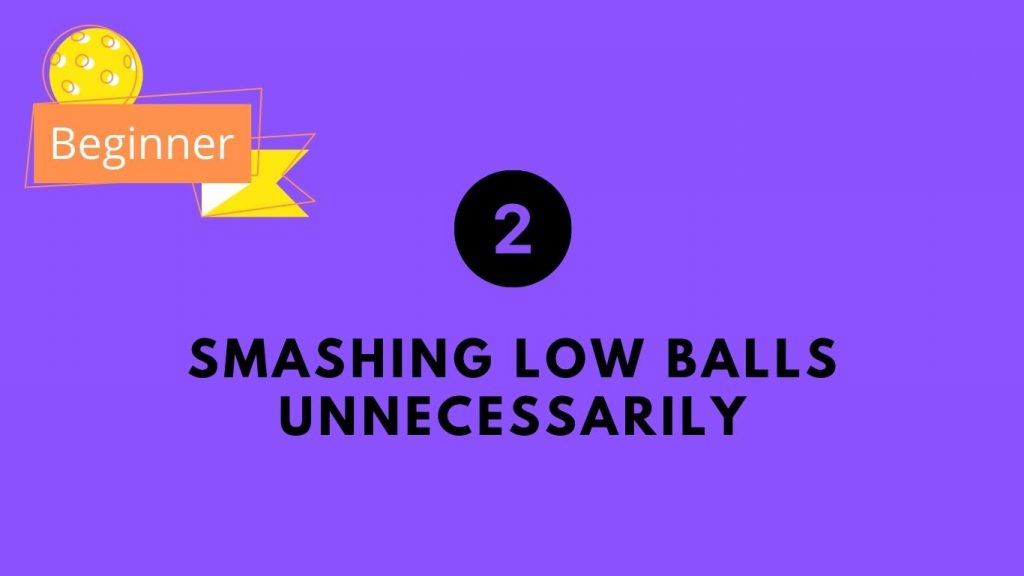
Many beginners often can’t control them from smashing low balls. They generally do it while standing in the non-volley zone.
Normally, opponents send a luring shot that is not high enough and land into a tricky area. Beginners think they can volley the shot and aim at vigorously hitting the ball.
Unfortunately, the ball is more likely to touch the middle of the net directly. The reason is that you don’t have enough time to move your paddle head from the floor directly to your opponent’s direction.
So, you should not smash it. Just aim at sending it back in your preferred direction. You may have less power but will get the accuracy.
3. Attempting Shots That You Don’t Know
Many beginners and mid-level players often play shots that they don’t know. They just hit randomly. Some may say it helps them to improve their pickleball skills.
But this may put you in serious trouble. Suppose you are in the middle of the game where you and your opponent have an equal point. Will you try any random shot that you don’t know?
What is the chance of having the advantage of this random shot? You may lose further points and even lose the match. But you can practice them before the match or while training sessions,
4. Standing In No Man’s Land
Standing in no man’s land is a common mistake that many newcomers and intermediate players make. Ideally, you are supposed to stand either in the kitchen line or in the baseline.
Otherwise, you are staying in no man’s land, which is pretty risky to return a shot. The opponent player will hit the ball towards your feet, and you will fail or struggle to return it correctly.
Additionally, playing cross-court dinks while standing on the no man’s land is almost impossible. You either fail to return the ball or hit back the ball in the wrong zone.
5. Moving While Serving
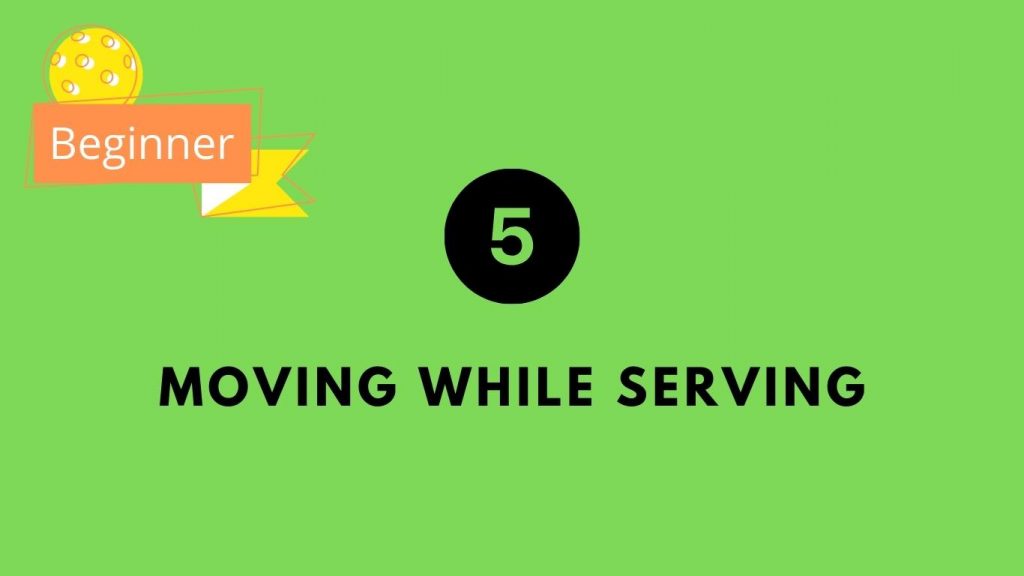
Have you ever seen any professional or experienced player moved from baseline when they serve? Generally, not! But this is a common practice among beginners.
Consider this scenario. You serve a ball and go out of the baseline. But your rival player sends a deep return serve.
How will you react? If the opponent hits the ball at your feet, you are in a trap. You will fail to hit the ball.
Alternatively, you may prefer to volley the ball, which will violate the double bounce rule. So it is a good rule of thumb to stay close to the baseline.
You must stick to this technique while playing against an advanced player. Otherwise, he will send a deep return serve.
6. Using Spin Shots All The Times
Do you have a habit of playing spit shots all the time? No doubt, it is a great shot to trick your opponents. But the weapon may not be effective against advanced players.
Read more “Pickleball Tips for Advanced Players“
Pro players already have practiced and played them so much that they know how to react to the ball. Instead of utilizing spin shots more often, read out the scenario first and then implement it only if it seems perfect.
Accuracy and preciseness are important while playing any pickleball shot. So, avoid playing spin shots randomly to prevent you from putting in a devastating situation. It is a good rule of thumb to avoid making spin shot your regular shot.
7. Playing With the Incompatible Paddle
Apart from your pickleball skills and techniques, beginner pickleball paddles make a significant difference in your gameplay. Playing with the wrong paddle won’t help you uplift your skill despite following the right technique.
One of the most important aspects of choosing a pickleball paddle is its weight. A too heavy paddle will result in elbow, arm, or wrist fatigue, while an excessively lightweight paddle won’t give you enough power to hit the ball.
However, the problem is that people’s weight preference varies. You may need to try out several paddles to figure out the ideal weight for you. But once you determine it, make sure to stick with it. Also, get a better-quality paddle.
8. Aiming To Hit Power Shots Always
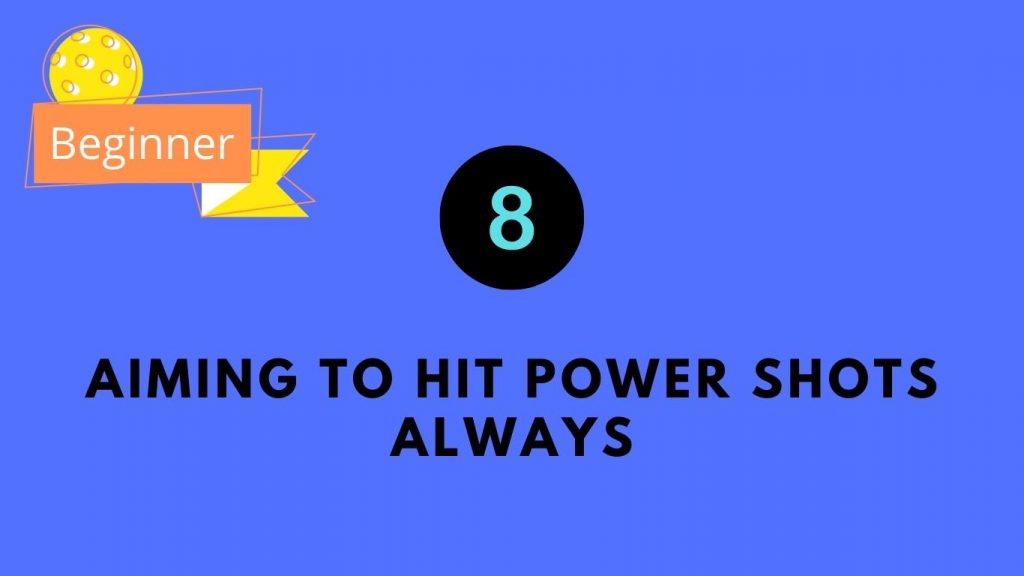
Many newbies believe powerful shots will make them win the game. If you still believe them, leave that thought, please.
Playing hard shots special on the third shot drive may land you in trouble as you don’t know how your opponent will react to the shot.
He may return the shot in a way you have not prepared for. You may end up hitting the ball directly on the net or even out of the baseline.
Additionally, avoid playing power shots more frequently against advanced players as they already know how to deal with it.
However, that doesn’t mean you won’t play power shots. You just need to read out the playing scenario and implement the shot occasionally when necessary.
9. Forehand Player Not Handling Center-Court Shots
Clear and simple communication is crucial for pickleball games when playing as a team. Sometimes, you both try to hit the hat to go higher in the middle or none of you.
Generally, a dominant forehand player is supposed to hit the ball that goes to the center-court. Because it will be hard for the other person to hit the ball.
For example, if both you as well as your partner are right-handed, and you are standing on your left part of the court, any ball that goes through the middle area of the court should be handled by you.
After all, the forehand is the easier one to use and allows you to hit the ball more precisely if you don’t make any mistakes.
10. Not Getting Into the “No Volley Zone”
If you have a habit of playing pickle from the middle part of the court or the baseline, you should immediately stop practicing it.
After all, you are supposed to stay close to the “no volley zone.” Whenever you come out of the zone, aim at moving towards it quickly.
But make sure to track the ball when running towards the kitchen. It is, however, quite challenging to run to the kitchen and aim at hitting the ball at the same time.
Sometimes, you may lack mobility. In such a case, try to get close to the kitchen area as much as possible. Maintaining a balance is crucial, though.
11. Taking Dinking Shots Too Often With Advanced Players
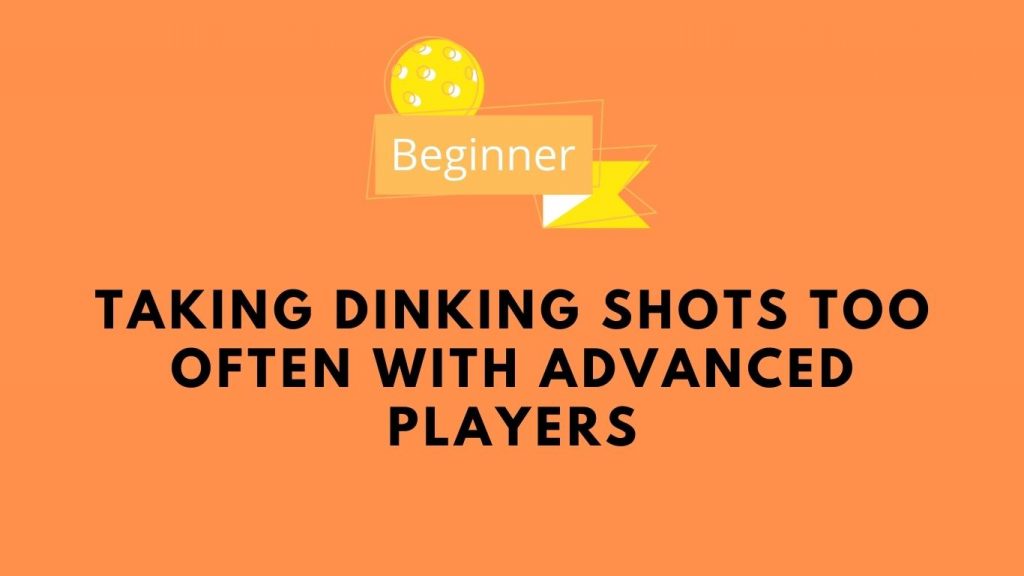
Some beginners can capture the technique of dinking shots too fast. After all, it is so fun and exciting to play that reflects how good your pickleball skills are.
But you will land into trouble for playing the same dinking technique continuously. Suppose you are playing with a team. You and another rival player are into a dinking battle.
In such as case, you should play a bailout dink after you receive the third dink. Surprise the opponent by sending the dink shot to the other player.
Since the other player won’t be prepared to play the shot, he will fail to return it precisely. This gives you a chance to play a better shot and win the point.
12. Not Having the Right Serve Techniques
It is a good rule of thumb to be properly aware of your technique. Your priority should be on implementing the technique accurately.
Avoid flipping your hands while serving the ball. Otherwise, this will put you in trouble.
It is a good rule of thumb to keep your pickleball paddle perpendicular to the pickleball court while serving the ball. This will give you more success.
13. Not Letting Shots Go Out
Not all balls you have to deal with. You don’t need to hit a ball that comes towards your shoulder or face.
Otherwise, this will cause kitchen fault issues for not letting the shot. But letting the shot goes out allows you to earn a point without any elbow grease.
However, it is not pretty difficult to determine the ball will land on the spot where you have thought. It definitely requires several years of experience to become successful in it.
14. Bad Grip
A good grip means how efficiently you can control the ball. Instead of keeping the paddle on your palm, aimed at putting it in your fingers. This will ensure increased control.
Keeping the paddle always in your palm area will result in a swing up on the ball. Also, it is known as lousy grips.
So, which is the best grip for a new pickleball player? A continental grip is a beginner-friendly option that can help you to have better control over the ball.
More importantly, shifting from forehand shots to backhand shots will be easy. It is a good rule of thumb to change your current grip if you are facing difficulty controlling the trajectory of the shot.
15. Poor Footwork
Movement is an important aspect of pickleball. With poor footwork, you can’t uplift your pickleball performance.
Split-step is one of the most important footwork for pickleball. But knowing when to do it appears more crucial based on the playing condition.
Split-step means you stop your momentum and move to a particular direction based on where the ball goes.
You should split-step immediately the moment you see your rival player is going to hit the ball. This will prevent mishit issues too.
16. Attacking Unattackable Shots
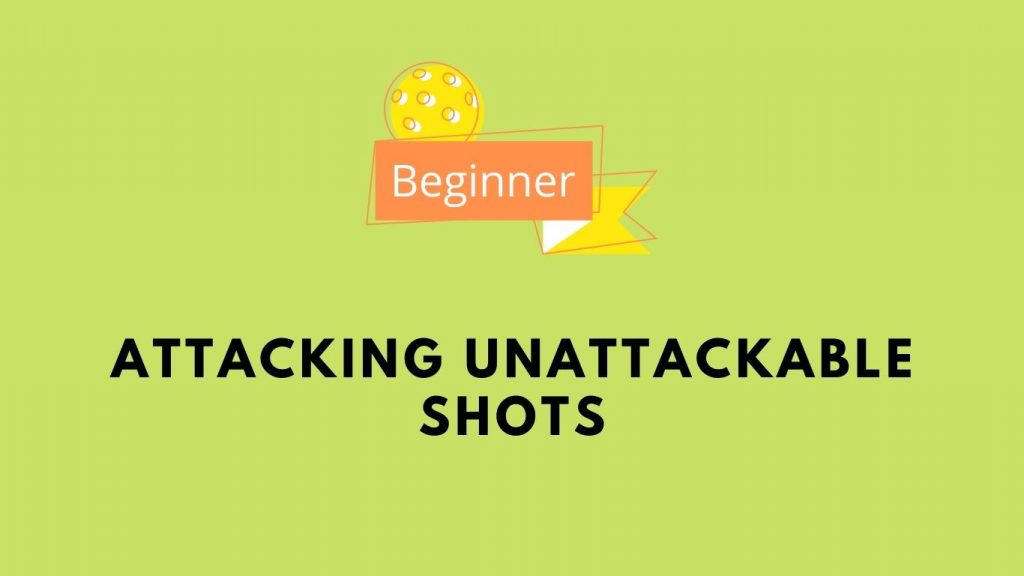
Many new players don’t have the patience to wait until a shot becomes perfect for attacking. They often end up hitting vigorous shots though they should not be.
Typically, any shots below the net position are not suitable for attacking. It is better to topspin this type of shot and keep doing it until it goes above the net.
It is a good rule of thumb to stay close to the opponent as much as possible, allowing you to react faster and giving less opportunity to utilize its precious resource.
On the contrary, people standing on the baseline have less chance to plan their shot direction and are forced to hit the ball quickly.
Conclusion
It is important first to understand the mistakes you are making and correct them accordingly. Regardless of the skill level you have, we make mistakes at a certain level of your gameplay.
But we should always learn from our mistakes and correct them. You can play with many experienced and advanced and tell them to figure out your mistakes. This will help you uplift your pickleball skills and become a better player. Hopefully, you have gained some knowledge on beginner pickleball players’ mistakes and how to correct them easily. Make sure to practice regularly to bring your best out of it. Happy Paddling! Cheers!

